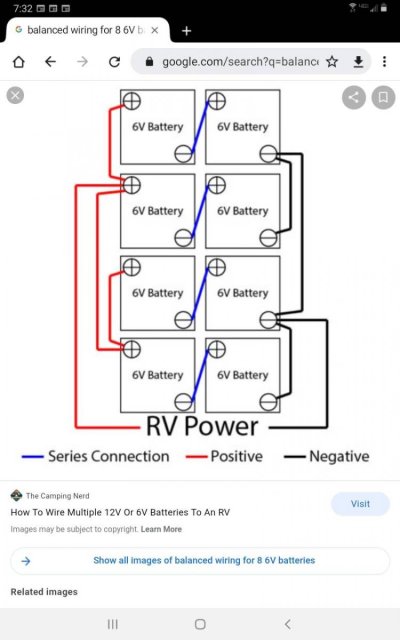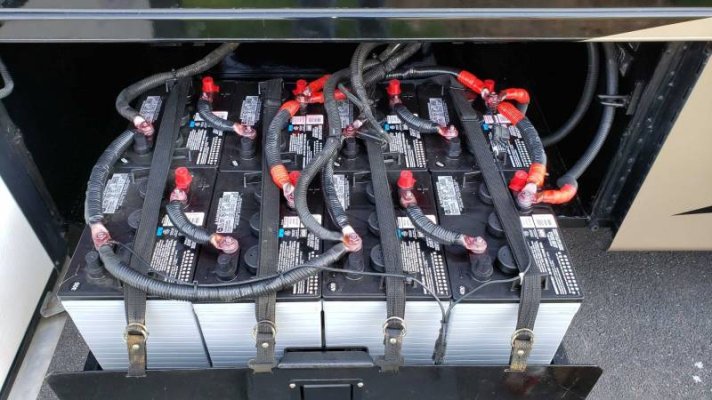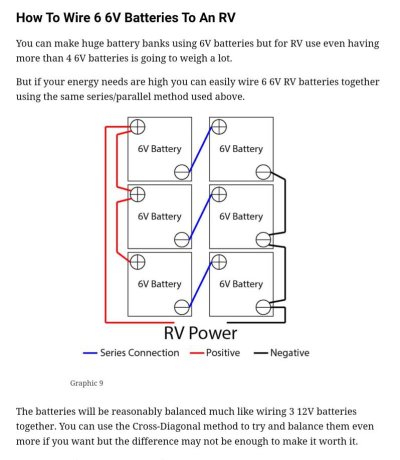J.R. Good
Member
- Joined
- Dec 13, 2020
- Messages
- 22
- Vessel Name
- Chesapeake
- Vessel Make
- Grand Banks 36 CL
Hi All,
I have 8 Trojan T-105 225ah wired series/parallel for a 12v 900ah house bank. I had heard some time ago about "cross connecting" to better balance everything, and then read about it again in Nigel Calder's book. I welcome any feedback from folks who know about such things. Diagram of the existing set up attached.
Thanks very much,
Randy Good
I have 8 Trojan T-105 225ah wired series/parallel for a 12v 900ah house bank. I had heard some time ago about "cross connecting" to better balance everything, and then read about it again in Nigel Calder's book. I welcome any feedback from folks who know about such things. Diagram of the existing set up attached.
Thanks very much,
Randy Good





 Thanks for all the input!
Thanks for all the input!
